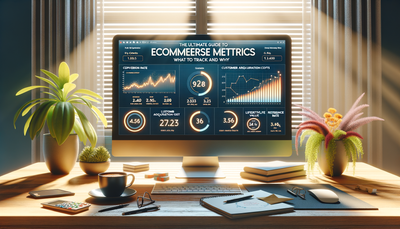Integrating Social Media with Your Business Website
In today's digital landscape, integrating social media with your business website is crucial for maximizing online presence and engagement. This article explores effective strategies to seamlessly connect your social media accounts with your website, enhancing user experience and boosting brand visibility. We'll delve into the benefits of social media integration, discuss various tools and widgets available, and provide actionable tips for cross-promotion. By implementing these techniques, you'll create a cohesive online ecosystem that drives traffic, increases followers, and ultimately contributes to your business's growth and success. Whether you're a small business owner or a marketing professional, this guide will help you leverage the power of social media integration to elevate your online presence.Table of Contents:

The Importance of Social Media Integration
Integrating social media with your business website is no longer optional; it's a necessity in today's digital age. By connecting your social platforms to your website, you create a seamless experience for visitors and potential customers. This integration allows for increased engagement, improved brand consistency, and enhanced visibility across multiple channels.Moreover, social media integration can significantly boost your website's credibility and authority. When visitors see active social media feeds and engagement on your site, it reinforces your brand's relevance and authenticity. This interconnected approach also provides multiple touchpoints for your audience, increasing the likelihood of conversions and fostering long-term customer relationships.
Do you need a website? Want to build a website but don't know where to start? Our website builder is the perfect solution. Easy to use, and with the ability to customize to fit your business needs, you can have a professional website in no time.
Social Media Widgets: Enhancing User Experience
One of the most effective ways to integrate social media with your website is through the use of social media widgets. These small, customizable tools allow you to display your social media content directly on your website, providing visitors with a snapshot of your social presence without leaving your site.Popular social media widgets include profile buttons, like boxes, and feed displays. Profile buttons are simple icons that link to your social media profiles, making it easy for visitors to follow you on various platforms. Like boxes showcase your follower count and allow users to like or follow your page directly from your website. Feed displays, on the other hand, show a live stream of your most recent social media posts, keeping your website content fresh and encouraging visitor engagement.
Feed Integration: Keeping Your Website Dynamic
Integrating social media feeds into your website is an excellent way to keep your content dynamic and up-to-date. By displaying your latest posts from platforms like Twitter, Instagram, or Facebook, you can showcase your brand's personality and engage visitors with fresh content.There are several ways to integrate social media feeds into your website. You can use plugins or embed codes provided by social media platforms to display your feed directly on your site. Alternatively, you can use third-party tools that offer more customization options and allow you to curate content from multiple social media accounts. When implementing feed integration, consider the placement and design to ensure it complements your website's overall aesthetic and user experience.
Building a website with SITE123 is easy
Cross-Promotion Strategies for Maximum Impact
Effective cross-promotion between your website and social media channels is key to maximizing your online presence. Start by prominently displaying social media icons on your website's header, footer, or sidebar to encourage visitors to connect with you on various platforms. Include social sharing buttons on blog posts and product pages to make it easy for users to share your content.On your social media profiles, regularly share links to your website's content, such as blog posts, product launches, or special offers. Use compelling visuals and engaging captions to entice followers to visit your site. Consider creating exclusive content or promotions for your social media followers and direct them to your website to access these special offers. This two-way promotion strategy helps drive traffic between your website and social media channels, increasing overall engagement and reach.
Leveraging User-Generated Content
User-generated content (UGC) is a powerful tool for building trust and authenticity. Integrate UGC from your social media channels into your website to showcase real customer experiences and testimonials. This can be achieved through embedded social media posts, customer review widgets, or dedicated UGC galleries.Encourage your customers to share their experiences with your products or services on social media using branded hashtags. Then, feature this content on your website to create a sense of community and social proof. This strategy not only enhances your website's credibility but also incentivizes more customers to engage with your brand on social media, creating a virtuous cycle of engagement and promotion.
Measuring Success and Optimizing Integration
To ensure your social media integration efforts are effective, it's crucial to measure their impact and continuously optimize your strategy. Use analytics tools to track metrics such as website traffic from social media, engagement rates on integrated feeds, and conversion rates from social media referrals.Regularly review these metrics to identify which integration tactics are most effective for your business. Experiment with different types of content, widget placements, and cross-promotion strategies to find the optimal mix for your audience. Don't be afraid to adjust your approach based on the data and feedback you receive. Remember, successful social media integration is an ongoing process that requires constant refinement and adaptation to changing trends and user preferences.





